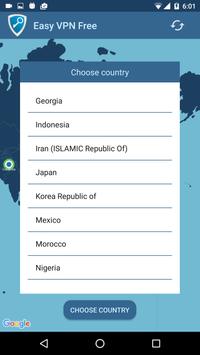
#Easyvpn github how to#
In this section, we will provide instructions on how to set up a basic OpenVPN server configuration. Like many other widely-used open-source tools, there are dozens of configuration options available to you.

Once these programs are installed and have been moved to the right locations on your system, the next step is to customize the server-side configuration of OpenVPN. Then change the directory’s owner to your non-root sudo user: sudo chown sammy /etc/openvpn/easy-rsa/

#Easyvpn github download#
You can find the download link for the latest version of easy-rsa-2 on the project’s Releases page: For the purposes of this tutorial, we recommend using easy-rsa-2 because there’s more available documentation for this version.
#Easyvpn github install#
Next, install OpenVPN and wget, which we will use to install Easy RSA:
#Easyvpn github update#
Then update your package lists once more: OpenVPN isn’t available in the default CentOS repositories but it is available in EPEL, so install EPEL: The Extra Packages for Enterprise Linux (EPEL) repository is an additional repository managed by the Fedora Project containing non-standard but popular packages. Log in to the server as the non-root sudo user, and update the package lists to make sure you have all the latest versions. We’ll also use Easy RSA to generate our SSL key pairs later on to secure the VPN connections. We’ll also install Easy RSA, a public key infrastructure management tool which will help us set up an internal certificate authority (CA) for use with our VPN. To start, we will install OpenVPN on the server. With these prerequisites in place, you are ready to begin setting up and configuring an OpenVPN server on CentOS 7. For the purposes of this tutorial, it’s recommend that you use your local machine as the OpenVPN client. Note that just adding an A record will meet the requirements of this tutorial.Ī client machine which you will use to connect to your OpenVPN server. To set this up, you will first need to register a domain name and then add a DNS record via the DigitalOcean Control Panel. One CentOS 7 server with a sudo non-root user and a firewall set up with firewalld, which you can achieve with our Initial Server Setup with CentOS 7 guide and the Additional Recommended Steps for New CentOS 7 Servers.Ī domain or subdomain that resolves to your server that you can use for the certificates. For this reason, please be mindful of how much traffic your server is handling.


How to run the toolĮasyVPN includes EasyVPNSerer and EasyVPNClientĮasyVPNServer needs to be deployed to a machine with public ip address, e.g, an Amazon EC2 VM. EasyVPN is a tool to enable you to access your remote intranet contents from anywhere, you can use whatever clients like putty, WinSCP or mRemoteN to access your remote machine, file system or remote desktop.


 0 kommentar(er)
0 kommentar(er)
